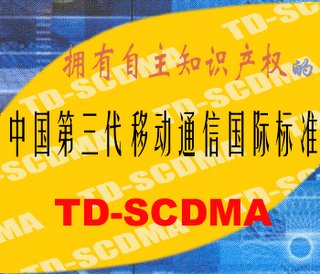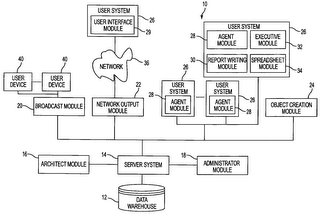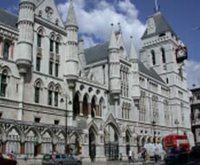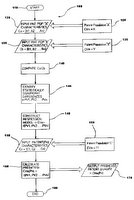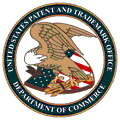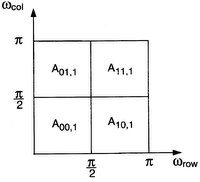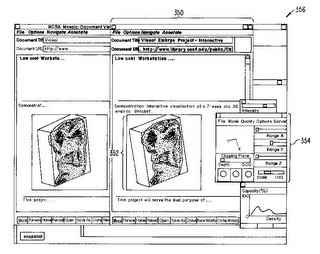
QUESTIONS TO ASK THE USPTO AT THE TOWN HALL MEETING: As readers of this blog are aware, the USPTO is conducting a series of Town Hall Meetings to discuss proposed changes to patent practice. One of the most controversial proposals made by the USPTO was the requirement that applicants should not file more than one continuation, lest they want to be brought before the Commissioner to explain why amendments, arguments, or other evidence could not have been previously submitted.
The USPTO is visiting Chicago on Feb. 1 to start off a series of meetings that will be held across the country (future locations include California, Texas and Washington, D.C.). I was originally planning to attend, but have now concluded that my work schedule will not permit me to participate. Accordingly, I thought I would post some questions I think are worth asking on the proposal to limit continuations. Feel free to use them if you find them useful:
Q1: Will the USPTO's Balanced Disposal System be adjusted in light of these changes? To put it simply, the Balanced Disposal System is a work productivity metric for examiners at the USPTO where a completed examination of one application is considered a balanced disposal or BD. A BD consists of a New (N) count or point and a Disposal (D) count or point, where 1 BD = 1 N + 1 D. The disposal count is given to an examiner only when: (1) the application is allowed, (2) the application is abandoned, (3) the applicant files a request for continued examination, (RCE), or (4) the examiner files an examiner's answer to an appeal brief.
Since RCE's would be used against applicants under the new proposal, there will be tremendous pressure on applicants to avoid filing an RCE, since this would substantially complicate any future options for filing a continuation. Accordingly, the appeal process will become a regular stop for applicants. Since the normal appeal process substantially delays a disposal count for the examiner, it is likely that BD productivity will drop for many examiners, which in turn will negatively affect their annual reviews. Furthermore, if the the appeal is successful for the applicant during the pre-appeal brief conference, the examiner has to start back from square one again (i.e., issue a new rejection/count).
It appears then, that the proposed continuation practice may deter examiners from asserting rejections that are based off of subjective interpretation. Whether a plausible rejection is right or wrong, Examiners may become hesitant to bring such rejections forward, for fear that anything but the strongest of rejections would negatively affect their productivity. Accordingly, it is entirely possible that under the proposed changes, even more "bad" patents will result, and the examination process will become less flexible for everyone.
Q2: How will the BPAI prepare for the inevitable onslaught of appeals? One of the points made by the USPTO is that the Board of Patent Appeals and Interferences (BPAI) has drastically reduced its backlog to the point that the time-saving benefits of filing an RCE, as opposed to filing an appeal, have been minimized. However, this apparently presumes that the current rate of appeal will remain constant should the proposal be implemented. With all due respect, this is wishful thinking. Suppose the backlog balloons back to a 3-year pendency at the BPAI (circa 1997)? What are we to do then? What about the Office of Petitions? Incidentally, the BPAI's docket includes review of continuation applications as well - how were they able to reduce their backlog when the examining corps wasn't?
Q3: With so many subjective requirement, how are applicants expected to comply with these proposed changes? The part that disturbed me the most about the proposed changes is that they provide no guidance on what types of circumstances will be "satisfactory" to allow further continuations. Furthermore, the tenor of the comments provided by the USPTO suggest that they are not interested in how prosecution benefits the applicant; they seem to be more concerned about how prosecution affects their own work flow. In fact, the entire foundation of the proposed continuation change rests on a rebuttable presumption that a second or subsequent continuation is being presented for an improper purpose. Take, for instance, the following paragraph:
[The proposed changes] require that applicants who file multiple continuing applications from the same initial application show that the third and following applications in the chain are necessary to advance prosecution. In particular, the proposed rules require that any second or subsequent continuing application show to the satisfaction of the Director that the amendment, argument, or evidence could not have been submitted during the prosecution of the initial application or the first continuing application.
"Necessary to advance prosecution?" For whom? What will give the Director's Office the "satisfaction" they are looking for? In effect, the Office is applying an abbreviated form of laches that is not entirely helpful or appropriate for the USPTO to consider. The Office starts from the truism that applicants don't have the right to file unlimited number of continuations, and then statistically contorts itself into the conclusion that one continuation should be enough for everyone. Even the Federal Circuit acknowledged that using continuation practice to cover infringing products is a valid practice, so long as it is supported by section 112(1) (
PIN/NTP, Inc. v. Platt Chemical Co., 304 F.3d 1235 (Fed. Cir. 2002)). However, the USPTO apparently disagrees, stating that "the practice of maintaining continuing applications for the purpose of adding claims after such discoveries is not calculated to advance prosecution before the Office." Maybe so, but there is nothing improper or inequitable about it either.
and . . . last but not least:
Q4: When will the USPTO be raising fees on continuations? Okay, maybe this isn't the right question to ask at the meeting, but the USPTO fee schedule stands in relation patent practice the same way the "commerce clause" stands in relation to Congressional legislative power. If the USPTO wants to curb or regulate a particular practice, they simply raise the fees to a point where it becomes impractical to engage in that practice. Back in 1998, the USPTO re-started its campaign to reduce the number of claims contained in a single application (oddly enough, at that time, continuations were encouraged as a means to more fully claim the scope of the invention - see
here, item (4)). After years of resistance from the patent bar, the USPTO went ahead anyways and raised fees on claims exceeding 3 independent claims and 20 claims total. I wouldn't be surprised if, by the end of the year, the USPTO issues a new fee schedule that doubles and triples the fees on continuations.
- There are also other issues, such as inequitable conduct and prosecution history estoppel, that should worry practitioners. But, alas, that is for another time.


